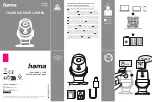
V1.02
Thom Hogan’s Complete Guide to the Nikon D300
Page 66
to “block up
26
” in underexposure, as does most slide film, for
example.
One thing that is a bit unexpected about the D300’s tonal
range is that it isn’t perfectly flat, as it has been on most
previous Nikon DSLRs. By “flat” I mean that the rendering of
the white-to-black patches on a Kodak stepped grayscale
chart don’t result in the expected flat line (see chart, below).
There’s a significant “hump” in the middle range of the tonal
curve (at least at the camera’s default settings), with “droops”
at both the deep shadow (left) and bright highlight (right)
ends. The example illustrated above is about the extreme I
could find, but virtually all Nikon Picture Control settings
produce a hump of some sort in the mid-range. The overall
impact of this is a bit more mid-range contrast than previous
Nikon bodies, and a little less of the “Nikon drab” look some
have complained about in out-of-camera JPEG images from
earlier cameras.
26
Imagine a chart with 64 increasingly brighter shades of gray from black to white. If
you were to photograph that chart, a “blocked up” shadow area would be one that
did not reproduce differences between adjacent dark grays, essentially rendering
many of them black (or near-black). Because film has a non-linear response to light,
many different light values are sometimes produced as black. Fuji Velvia, a slide film
favored by many professionals, has a pronounced tendency to render
any
object
underexposed by more than three stops as a rich, velvety black. The same problem
can occur at the bright extreme, as well. Blocked up highlights would be all bright
objects rendered as the same white (or near-white) color.
















































